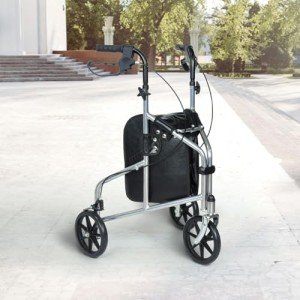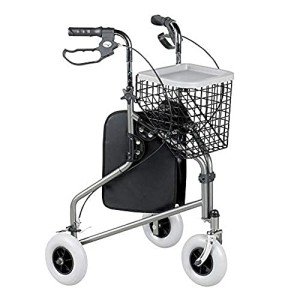This company has no active jobs
0 Review
Rate This Company ( No reviews yet )
About Us
15 Secretly Funny People In Medical Walker
Understanding Medical Walkers: A Comprehensive Guide
Medical walkers function as vital mobility aids for individuals recovering from surgical treatment, managing persistent illnesses, or handling age-related mobility issues. These gadgets not just enhance physical self-reliance however likewise enhance safety, allowing users to browse their environments with higher ease. This short article checks out the types, benefits, features, and considerations connected with medical walkers, along with some often asked concerns.

Table of Contents
- Types of Medical Walkers
- Benefits of Using a Medical Walker
- Key Features to Consider
- Frequently Asked Questions
- Conclusion
1. Types of Medical Walkers
Medical walkers are readily available in different styles, catering to different requirements and choices. The primary types include:
| Type of Durable Walker | Description |
|---|---|
| Requirement Walker | A rectangular frame with 4 legs, providing stability and assistance. |
| Two-Wheeled Walker | Comparable to a basic walker however geared up with wheels at the front for much easier motion. |
| Three-Wheeled Walker | A lightweight walker with three wheels, enabling for more maneuverability, suitable for indoor use. |
| Carlett Grey Shopping Rollator with Comfortable Fabric Seat Walker | A walker with four wheels, hand brakes, and a seat, appropriate for longer ranges and resting requirements. |
| Hemi Walker | Designed for individuals who can use just one hand, featuring a tripod-like design. |
2. Benefits of Using a Medical Walker
Utilizing a medical walker presents several benefits that add to the user’s general wellness, including:
- Increased Stability: Walkers offer a steady base of support, minimizing the danger of falls.
- Improved Mobility: They make it possible for users to walk around more quickly, promoting self-reliance.
- Discomfort Relief: By redistributing weight, walkers can alleviate discomfort in the joints, especially in the hips and knees.
- Posture Support: These gadgets encourage appropriate posture, lowering strain on the back.
- Boosted Confidence: Users typically feel more safe utilizing walkers, leading to much better self-esteem and increased activity levels.
3. Secret Features to Consider
When choosing a medical walker, it’s crucial to examine different features to discover the right fit. Here are some critical elements to think about:

- Weight Capacity: Ensure the walker can support the user’s weight while maintaining stability.
- Height Adjustment: Look for a walker with adjustable height settings to accommodate the user’s height and offer comfortable grip.
- Product: Lightweight aluminum walkers are simpler to navigate, while steel walkers use more powerful support however may be heavier.
- Wheel Quality: If selecting a wheeled walker, consider the wheel size and tread. Bigger wheels browse uneven surfaces more quickly.
- Seat Availability: If users will be walking for longer durations, a walker with an integrated seat can offer rest breaks when needed.
- Brakes: Hand brakes are particularly essential for safety in Rollator For Petite walkers to manage speed and stop when needed.
Kinds of Walkers with Features Comparison Table
| Walker Type | Weight Capacity | Height Adjustment | Wheels | Seat Available | Brakes |
|---|---|---|---|---|---|
| Requirement Walker | Approximately 300 lbs | Yes | No | No | No |
| Two-Wheeled Outdoor Walker | Up to 300 pounds | Yes | Yes | No | No |
| Three-Wheeled Walker | Up to 250 lbs | Yes | Yes | No | No |
| Rollator Walker | Approximately 400 lbs | Yes | Yes | Yes | Yes |
| Hemi Walker | Up to 250 pounds | Yes | No | No | No |
4. Often Asked Questions
Q1: Who must use a medical walker?A: Medical walkers are advantageous for individuals recuperating from surgical treatment, experiencing balance issues, or requiring assistance due to age-related mobility obstacles. Q2: Can a medical walker be adjusted?A: Yes, many
medical walkers are height-adjustable to accommodate different user heights, allowing for a more comfortable grip. Q3: How do I choose the right walker for my needs?A: Consider elements such as the
user’s weight, height, kind of mobility concerns, and whether they require a seat or brakes. Checking the walker for convenience and stability before purchase is likewise advisable. Q4: Are there any safety pointers related to utilizing a medical walker?A: Yes, users should ensure they do not lean too
greatly on the walker, use it on stable and level surface areas, and always ensure
the brakes are engaged when seated or fixed. Q5: Can walking with a medical walker help with rehabilitation?A: Absolutely. Medical walkers are often suggested as part of rehab programs as they encourage
exercise, which aids in recovery and mobility improvement. 5.
Conclusion Medical walkers play a crucial role in boosting the quality of life for individuals dealing with mobility difficulties. With different types and functions readily available, picking the right walker includes considering the user’s particular requirements and circumstances. By comprehending their benefits and proper use, people can regain self-reliance, enhance their mobility, and navigate their environments safely. Whether for short-term healing or long-term support, the best medical walker can significantly improve a user’s total well-being. Incorporating a medical walker into one’s daily regimen can be a transformative decision, making it easier to take part in life’s everyday activities while guaranteeing safety and confidence.

